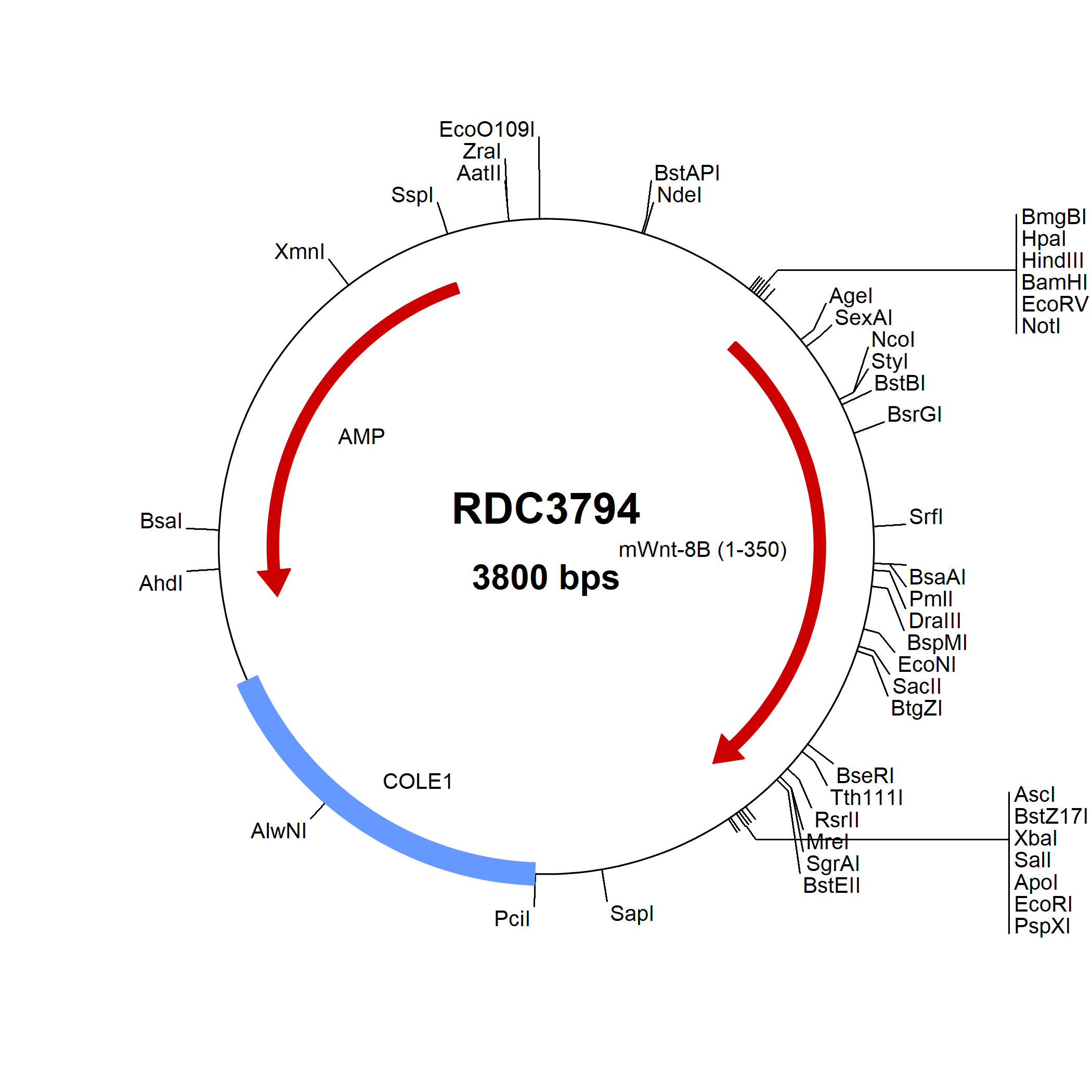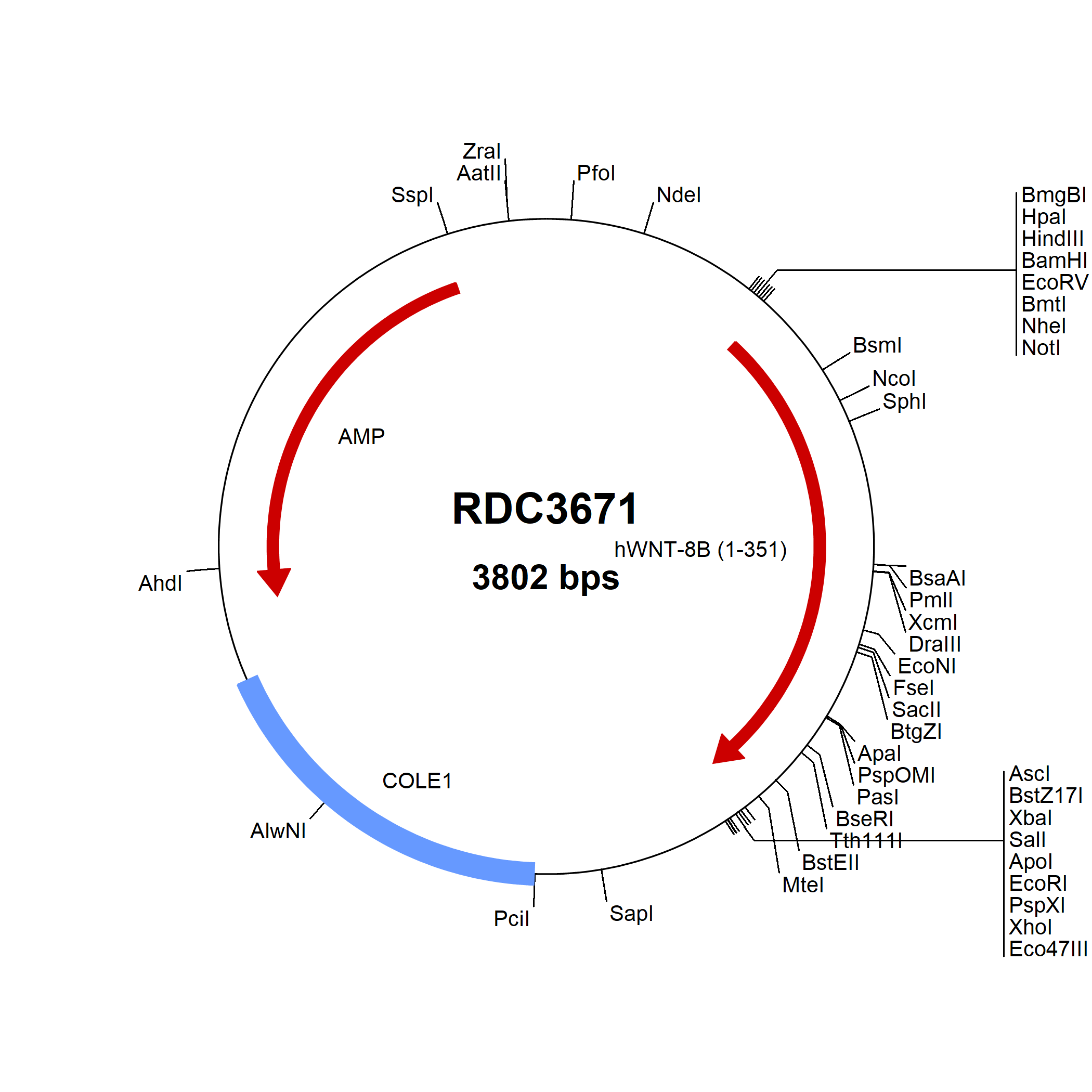Wnt-8b: cDNA Clones
Wnt-8b (Wingless related integration site family member 8b) is a secreted glycoprotein member of the Wnt family of proteins that function as ligands for the Frizzled family of receptors. Little is known about Wnt-8b function, although Wnt-8b expression has been reported in human endometrium. Wnt-8b may play a role in forebrain development. Mature mouse Wnt-8b is 329 amino acids in length and contains 24 cysteines plus three potential N-linked glycosylation sites. The mature mouse protein is 100%, 98% and 97% amino acid (aa) identical to mature rat, canine and human Wnt-8b, respectively.
The Wnts make up a large family of secreted proteins with roles in pattern formation, cell fate decision, axon guidance, and tumor formation. Wnt family members vary in length between 350 and 400 aa, possess 22 to 24 conserved cysteines, are highly hydrophobic, and show 20 - 85% aa identity within the Wnt family. In general, there are three signaling pathways associated with Wnt-receptor interaction. The first is commonly called the canonical pathway and ultimately culminates in beta-Catenin accumulation and TCF/LEF-1-mediated gene transcription. The other two less well-defined non-canonical pathways include the Wnt/Ca2+ pathway and the planar cell polarity (PCP) pathway.
2 results for "Wnt-8b cDNA Clones" in Products
2 results for "Wnt-8b cDNA Clones" in Products
Wnt-8b: cDNA Clones
Wnt-8b (Wingless related integration site family member 8b) is a secreted glycoprotein member of the Wnt family of proteins that function as ligands for the Frizzled family of receptors. Little is known about Wnt-8b function, although Wnt-8b expression has been reported in human endometrium. Wnt-8b may play a role in forebrain development. Mature mouse Wnt-8b is 329 amino acids in length and contains 24 cysteines plus three potential N-linked glycosylation sites. The mature mouse protein is 100%, 98% and 97% amino acid (aa) identical to mature rat, canine and human Wnt-8b, respectively.
The Wnts make up a large family of secreted proteins with roles in pattern formation, cell fate decision, axon guidance, and tumor formation. Wnt family members vary in length between 350 and 400 aa, possess 22 to 24 conserved cysteines, are highly hydrophobic, and show 20 - 85% aa identity within the Wnt family. In general, there are three signaling pathways associated with Wnt-receptor interaction. The first is commonly called the canonical pathway and ultimately culminates in beta-Catenin accumulation and TCF/LEF-1-mediated gene transcription. The other two less well-defined non-canonical pathways include the Wnt/Ca2+ pathway and the planar cell polarity (PCP) pathway.


